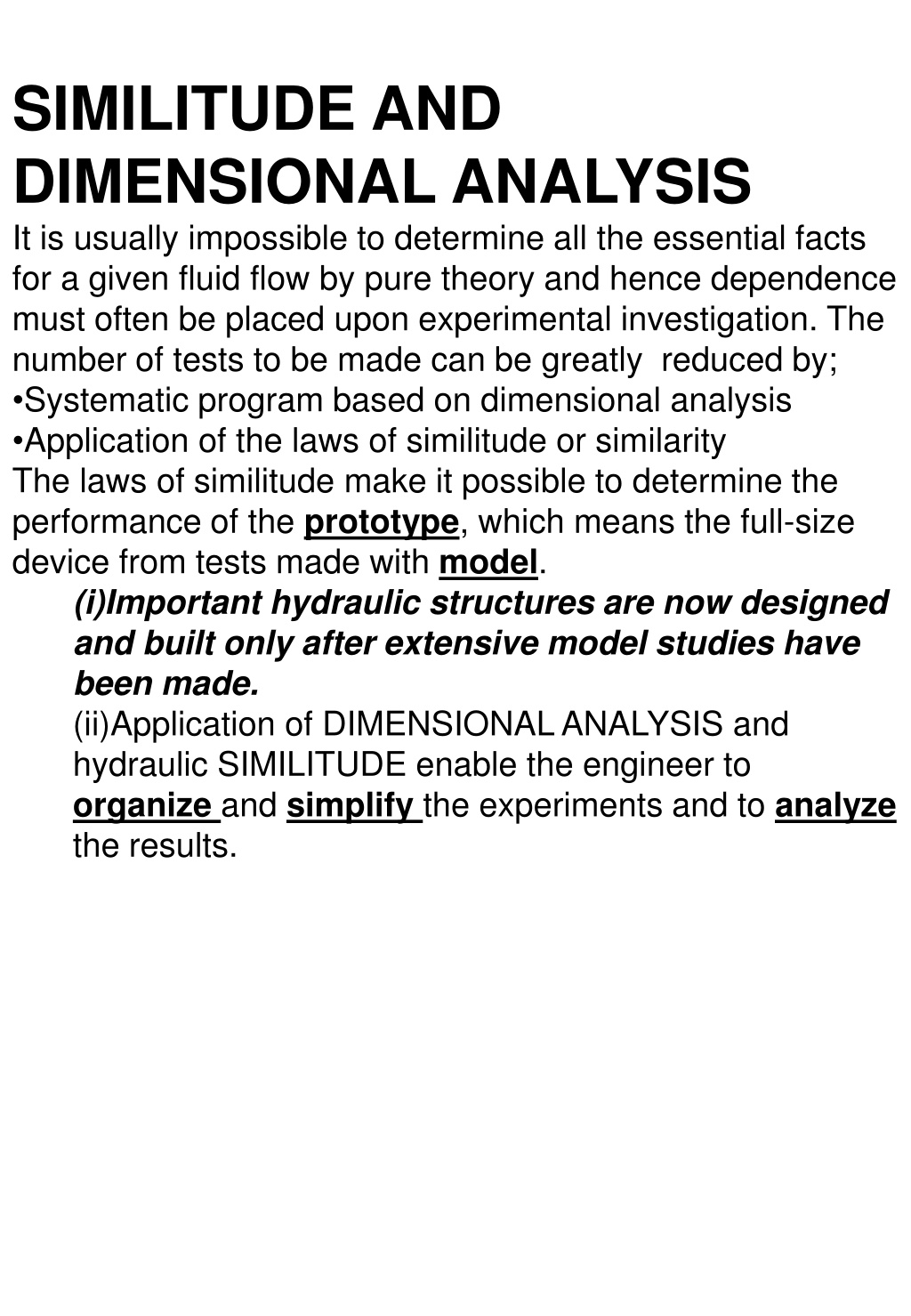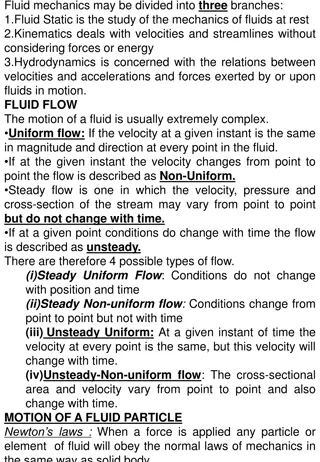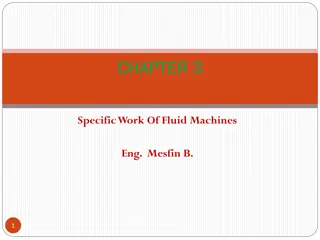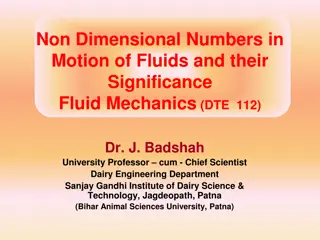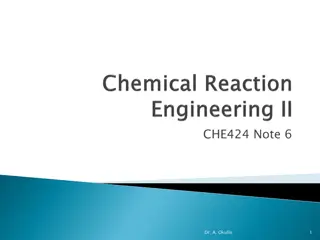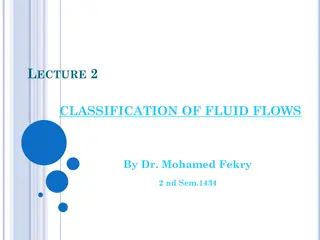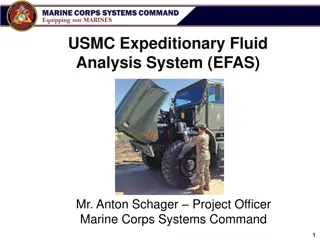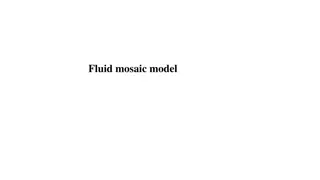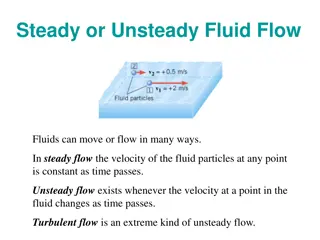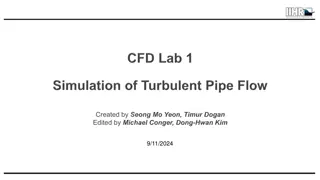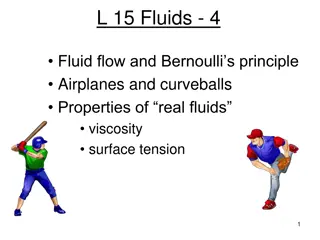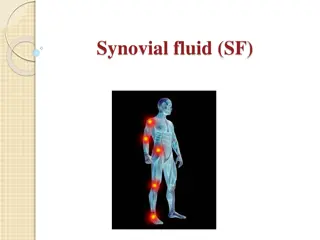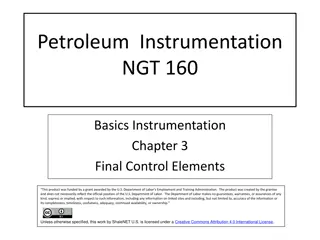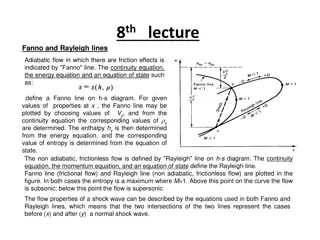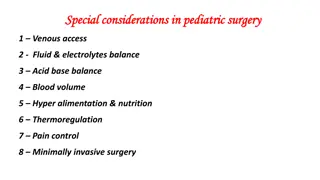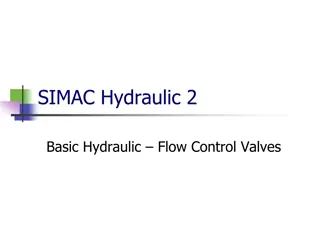Fluid Flow Analysis and Model Studies
Essential facts for fluid flow are determined through experimental investigation, aided by similitude, dimensional analysis, and hydraulic models. Geometric, kinematic, and dynamic similarities play crucial roles in designing hydraulic structures. The concept of Reynolds Number is utilized for similitude in fluid dynamics.
Download Presentation

Please find below an Image/Link to download the presentation.
The content on the website is provided AS IS for your information and personal use only. It may not be sold, licensed, or shared on other websites without obtaining consent from the author.If you encounter any issues during the download, it is possible that the publisher has removed the file from their server.
You are allowed to download the files provided on this website for personal or commercial use, subject to the condition that they are used lawfully. All files are the property of their respective owners.
The content on the website is provided AS IS for your information and personal use only. It may not be sold, licensed, or shared on other websites without obtaining consent from the author.
E N D
Presentation Transcript
SIMILITUDE AND DIMENSIONAL ANALYSIS It is usually impossible to determine all the essential facts for a given fluid flow by pure theory and hence dependence must often be placed upon experimental investigation. The number of tests to be made can be greatly reduced by; Systematic program based on dimensional analysis Application of the laws of similitude or similarity The laws of similitude make it possible to determine the performance of the prototype, which means the full-size device from tests made with model. (i)Important hydraulic structures are now designed and built only after extensive model studies have been made. (ii)Application of DIMENSIONAL ANALYSIS and hydraulic SIMILITUDE enable the engineer to organize and simplify the experiments and to analyze the results.
Lr= ratio Scale L p = L , m 2 A L HYDRAULIC MODELS Hydraulic models in general may be either (i) TRUE MODELS (ii) DISTORTED MODELS. p p 2 = = L r 2 A L m m Note that L p L = r True models have all significant characteristics of the prototype reproduced to scale i.e. (geometrically similar) and satisfy design restrictions (kinematic and dynamic similitude) I . GEOMETRIC SIMILARITY (SIMILITUTDE) The model and its prototype be identical in shape but differ only in size. Geometric similitude exists between model and prototype if the ratios of all corresponding dimensions in model and prototype are equal. L scale ratio , m I.the reciprocal of this L = m L p will be referred to as the model ratio or model scale.
KINEMATIC SIMILARITY: Kinematic similarity implies geometric similarity and in addition it implies that the ratio of the Velocity ratio V L p = = and its value in terms of Lr will be determined by dynamic considerations. T is dimensionally L/V . The time scale is = r V r V T m r L T = r r V r Acceleration scale is L a = r r 2 T Discharge = r 3 Q L p = = r Q r Q T m r III DYNAMIC SIMILARITY: If two systems are dynamically similar, corresponding FORCES must be in the same ratio in the two. Forces that may act on a f Gravity = = 3 FG mg L g Pressure ( ) = 2L FP p Viscosity du V = = = 2 FV A L VL dy L Elasticity = = 2L F E A E E V V Surface Tension = FT L Inertia L = = = = 3 4 2 2 2 FI ma L L T V L 2 T The conditions required for complete similitude are developed from Newton s second law of motion F = REYNOLDS NUMBER Considering the ratio of Inertia forces to viscous forces the parameter obtained is called Reynolds Number R is a dimensionless number. EXAMPLE 1.If the Reynolds number of a model and its prototype are the same find an expression for Vr, Tr, and a 2.Let us consider the drag force FD exerted on a sphere as it moves through a viscous liquid The relationship of variables is our concern our approach is to satisfy dimensional homogeneity, i.e. Dimensions on LHS=Dimensions on the RHS TWO METHODS ARE AVAILABLE Let us consider the drag force FD exerted on a sphere as it moves through a viscous liquid 1.RAYLEIGH METHOD 2.BUCKINGHAM (iii)fluid properties , density and viscosity ma x x e R or 2 2 F InertiaFor ces L V LV LV R THEOREM SOLUTION TO PROBLEM 2 = = = = = I N F ViscousFor 1.Visualize the physical problem 2.Consider what physical factors influence the drag force (i)the size of the sphere (ii)the velocity of the sphere ces LV V
(i)fluid properties , density and viscosity 1 1 2 = = RAYLEIGH METHOD c + a = + d b b 3 d c d ( ) could be written as power equation where C is a dimensionless constant. Using MLT system and substituting the proper dimensions. FD= F F , ,V V , f D = a b c d CD ma D = b c d ML L M M = a L 2 3 T T L LT To satisfy dimensional homogeneity the exponents of each dimension must be identical on both sides of the equation. We have 3 equations and 4 unknowns Express three of the unknowns in terms of the fourth. Solving for a, b, c, in terms of d = 2 a d = 2 b d = 1 c d = 2 2 1 d d d d F CD V D Grouping variables according to their exponents d VD = 2 2 F C D V D The quantity M: L: T: VD = e R The power equation can be expressed as ( ) R 2 = F 2V 2 F f D D or e ( ) R = D V f e 2 D BUCKINHAM -THEOREM This theorem states that if there are n dimensional variables I a dimensionally homogeneous equation, described by m fundamen F ( ) = , , , f D V D = = 5 , , , , n F D V D = = 3 , , m M L T = 2 n m Buckingham referred to these dimensionless groups as f terms. The advantage of the theorem is that it tells one ahead of time how many dimensionless groups are to be expected. ( = ) = ' , , , , 0 F D V D 5 n = 3 m = 2 n m ( ) = , 0 1 2
Since the M s (pi s) are dimensionless they can be replaced with 0 0 0 L T Working with 1 1 1 1 a c d M L M = 0 0 0 1 b M L T L 3 L T LT = + : 0 1 a 1 b M a d + = + : 0 3 c 1 1 1 1 L c d = : 0 1 1 T d Solving for a1, b1 and c1 in terms of d1 = 1 1 a d = 1 1 b d = 1 1 c d 1 1 d d DV = = = = = = 1 1 1 1 d d d d Re D V N R ynoldsNumb er 1 R e DV Working in a similar fashion with 2 F = D 2 2 2 D V F ( ) = " d N R 2 2 D V = ( ) 2 2 " F N D V D R Take Note That dimensional analysis does not provide a complete solution to fluid problems It provides a partial solution only That the success of dimensional analysis depends entirely on the ability of the individual using it to define the parameters that are applicable.
